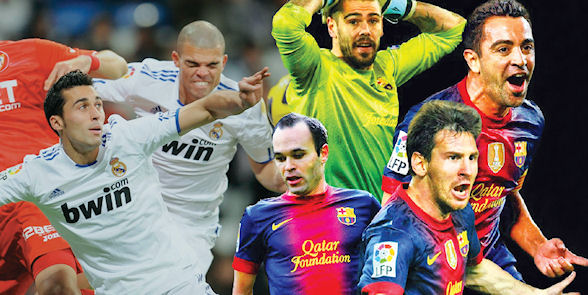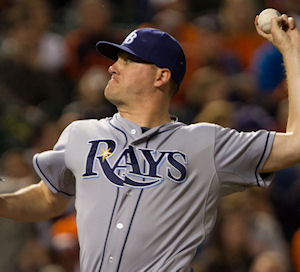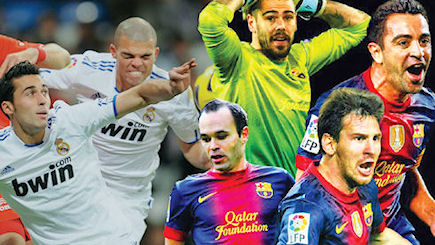This article first appeared in the Mar/Apr 2014 issue of World Gaming magazine.
Professional sport is big business. There is a lot of money thrown around these days with billion dollar TV deals, huge salaries and monstrous prize money on offer. But it seems different parts of the world have different ideas on what constitutes a healthy competition. Is it all about the cash, or should the governing bodies look beyond the lure of a big bank account? We take an in-depth look at the concept of a healthy sporting competition.

Exactly what is the definition of a healthy competition? Could it be a simple case of strong revenue and audience satisfaction? If this is the case then European football may stand as the world’s benchmark when it comes to healthy, professional sporting competitions. Yet here at WGM we can’t help but feel this is a little short-sighted.

Baseball’s Tampa Bay Rays
Many years ago an official from the New York Yankees suggested that the health of the competition was the responsibility of every team taking part. He said you would never want to get to the point where one team was so dominant that the World Series saw the New York Yankees playing the New York Yankees. Major League Baseball’s Tampa Bay Rays were once voted the worst professional sporting team in the world but in the last decade they have become one of the strongest teams in the hardest division in baseball – competing against the likes of the Yankees and the Red Sox.
With that in mind, it stands to reason that one of the most important factors in any healthy sporting competition must be “hope”. It’s a very simple notion yet this most basic of human emotions is what urges on players, owners and most importantly supporters to keep turning up day after day, month after month and year after year even when the chips are down.
The National Rugby League (NRL) competition in Australia may be the best example in the world when it comes to this notion of hope. Prior to 1990, rugby league followed the model set by the majority of sporting competitions around the world whereby the richest clubs bought the best players and the weakest clubs often withered and died. The result of this was predictable – between 1925 and 1929, South Sydney won five premierships in a row; between 1956 and 1966 St George won a record 11 premierships in a row; and in the 1980s Parramatta and Canterbury won eight of the 10 premierships on offer between them. The introduction of a salary cap by the Australian Rugby League (ARL) in 1990, which was also adopted by the newly formed NRL in 1998, saw all 16 teams given an identical limit to how much they could spend on players each season (set to rise to AU$6.3 million in 2014). The result of this has been an incredibly even competition. Since 1998, nine different sides have lifted the trophy, 12 have played in a grand final and all 16 have reached the finals. In this 2014 season every one of those 16 teams holds a realistic “hope” of making the eight-team final series and it’s hard to think of another sport which offers its fans such a fair and balanced competition.

The other competition that deserves special mention is the National Football League (NFL) in the United States, which also offers hope for its supporters. Creating a quality NFL team takes time. It is more complex in its creation than in any other sport, which makes its achievements in this department even more impressive. A good example of how the NFL has succeeded has been the demise of the NFC East as the competition’s most powerful division. Who would have ever thought that Dallas, Philadelphia, Washington and the New York Giants would ever represent the weakest division in football? These teams have been dominant since the modern Super Bowl era of the game came about. Five years ago, the two weakest divisions were the AFC West and the NFC West but these are now arguably the two strongest divisions in football featuring the likes of Denver, Kansas City, San Diego, San Francisco, Seattle and Arizona.
On the other hand, football (or soccer) relies on heavyweight clubs belting up on smaller clubs year after year. The weaker clubs have nothing more to play for outside of trying to remain in the top division and receiving the hefty paycheck from TV rights that comes with it. Maybe this is enough for their fans – simply making it to the Premier League or Serie A is a win in itself for these smaller clubs, but they are never going to challenge for the title in the top division. Maybe just getting to compete against the best in the world is enough, but in places like Australia or America, this wouldn’t represent enough “hope” for fans who are used to demanding some kind of light at the end of the tunnel.
There is, of course, a small glimmer of hope in the EPL with the purchase of Manchester City by billionaire Mansour bin Zayed Al Nahyan seeing them join the “big four”of Manchester United, Arsenal, Chelsea and Liverpool. Even Tottenham and Everton could argue that they are slowly staring to bridge the gap.
Conversely, Spain and Scotland have just two clubs that consistently share the silverware. The Germans are even leaner with one super club in Bayern Munich who lord over the other teams year after year after year. The Italian Seria A may be a little stronger now that the dominance of the two Milan teams has been diminished slightly although again the smaller clubs are no hope of winning trophies.
Unless all the clubs involved can have at least some expectation of competing against the heavyweights, no competition is going to be as strong as it could be. The huge worldwide appeal of football, the vast sums of money invested and concepts such as the relegation system help keep people interested, but is it enough? There is no doubt football fans have a different way of looking at their sport but there must come a time when the health of the competition as a whole comes before the interests of the likes of Manchester United, Real Madrid or Juventus.







